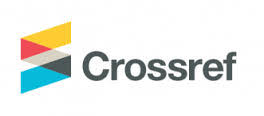The Reality of Applying Electronic Administration in Schools in the Koura District from the Point of View of Male and Female Teachers of the First Three Grades
DOI:
https://doi.org/10.59759/educational.v3i4.820Keywords:
Electronic Administration, Public Schools, Koura District, , Male and Female Teachers for the First Three Grades.Abstract
The study aimed to: reveal the reality of applying electronic administration in schools in the Koura district from the point of view of male and female teachers of the first three grades. To achieve the objectives of the study, the researcher relied on the correlative descriptive analytical method and used the questionnaire as a tool for the study to collect the opinions of the members of the study sample. It consisted of three areas including (18) items. The study sample consisted of (185) male and female teachers who were selected from the entire community. The results indicated that:
* The reality of applying electronic administration in Koura District schools from the point of view of male and female teachers in the first three grades was moderate.
* There were no statistically significant differences in the reality of applying electronic management in Koura District schools from the point of view of male and female teachers in the first three grades due to the variables (gender, academic qualification, and years of experience)
In light of these results, the researcher recommended:
First: Spreading the culture of electronic interaction among male and female teachers of the first three grades in government schools in the Koura District.
Second: Improving school leaders’ desire and motivation to implement electronic management through the presence of electronic information protection systems in public schools.
Downloads
References
Chang, I. H. (2012). The effect of principals' technological leadership on teachers' technological literacy and teaching effectiveness in Taiwanese elementary schools. Journal of Educational Technology & Society, 15(2), pp328-340.
Che - Meh, S & Nasurdin, M. (2009). The Relationships Between Job Resources. Job Demands and Teachers, OCB. Retrieved November 15, 2009, form: www.usm.my
Newman, B. & Conrad, K. (2000). A Framework for Characterizing Knowledge Management Methods, Practices, and Technologies. The Knowledge Management Theory Papers. The Knowledge Management Forum
Li, G. and Ni, X. 2011. Primary EFL Teachers’ Technology Use in China: Patterns and Perceptions, RELC Journal, April 1, (42): 69-85.
Prokopiadou, G. (2012). using information and communication technologies in school administration: Researching Greek kindergarten schools. Educational management administration & leadership, 40(3), 305-327.


